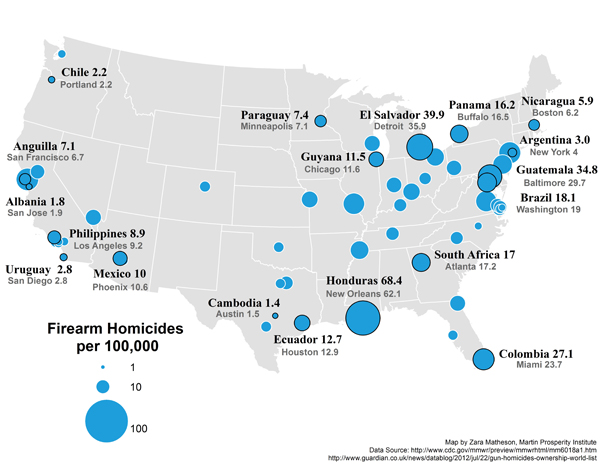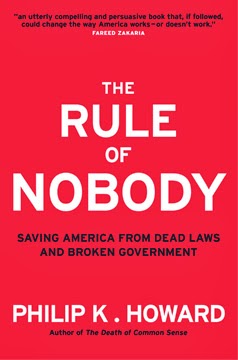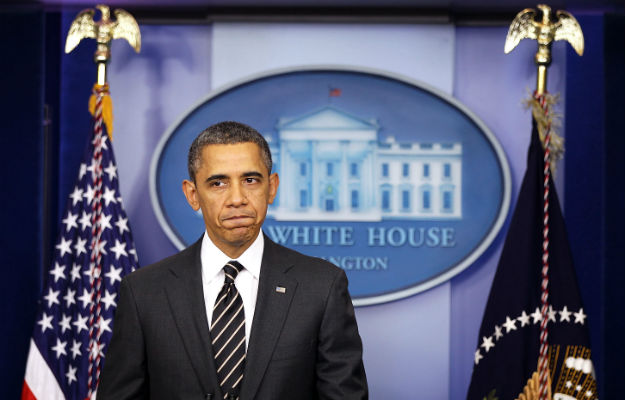On March 22, 2014, the Monroe News-Star quoted Louisiana Board of Elementary and Secondary Education (BESE) member and St. Martin Parish Superintendent Lottie Beebe (pictured above) in such a manner as to incorrectly portray Beebe as supporting the Common Core State Standards (CCSS).
Beebe does not support CCSS.
In her response below, Beebe clarifies not only her position against CCSS but also her experience and position on a number of so-called education “reform” issues mandated in Louisiana’s classrooms:
I have learned a lesson. In the future, I will provide a written response to reporter inquiries. This is my response to Common Core and there may be those who say I sound like a politician. To the contrary, I consider myself a public servant and educator.
There has been much debate surrounding Common Core Standards. According to Merriam-
Webster dictionary, a standard is a level of quality, achievement, etc. So what is the problem?
Many educators will say they are not opposed to rigorous standards and high expectations. Some will say they are not opposed to Common Core (CC) standards because the standards are merely objectives—norms. Two examples taken directly from the Louisiana Department of Education (LDOE) website include the following:
* 3rd grade math: Tell and write time to the nearest minute and measure time intervals in minutes. Solve word problems involving addition and subtraction of time intervals in minutes.
*5th grade reading: Compare and contrast two or more characters, settings, or events in a story or drama, drawing on specific details in the text.
Again, what is the problem? Upon close examination, many of the CC standards are not age/grade appropriate and are rigorous because students are now expected to perform at a skill level in which prerequisite learning has not yet occurred for many. Many education researchers have pointed out that the K-3 standards are not age appropriate. The same can be said for other grade levels due to the lack of requisite skills. The rigor comes into play when the standards, once addressed at 5th or 6th grade, are now addressed at 3 or 4th grade. Simply put, performance expectations are increased (rigor) by setting the bar higher.
The Common Core debate is alive and somewhat contentious in Louisiana. Some are quick to say Louisiana can no longer continue to rank last in educational outcomes next to Mississippi. Chas Roemer, BESE President, likes to reference the 700,000 students who are trapped in failing schools. (Again, we must understand the rationale for CC implementation—follow the money; examine the education reform agenda; examine BESE policy to see how quickly we are approving charter schools expediting the charter application process, and the emphasis on Choice options.)
Governor Jindal and members of BESE supported Common Core in 2010. (Jindal, with aspirations for a national political office,now sees the writing on the wall and is “crawfishing.”) It is also important to note that Jindal is a member of the National Governors’ Association (NGA). He was also supportive of John White for the position of state superintendent of education. I often tell people the support for CC is bi-partisan–Republicans and Democrats embraced the CC agenda as early as 2008 and the support for CC continues to be a bi-partisan effort in 2014.
Bill Gates and other philanthropists lured others (educators) into the CC venture by providing money–representatives of the education associations were lured into believing in and advocating for CC standards. This has been documented by Dr. Mercedes Schneider, a blogger, in several articles.
I will also add there are educators in Louisiana who strongly support CC standards.
Therefore, it is difficult for those who don’t share the enthusiasm to stand up and be vocal.
Please note that Superintendents, Central Office Staff, Administrators, and teachers are often silent because educators are not supposed to reject standards. How dare an educator object to the setting of standards!
The reality is superintendents, like me, are in awkward positions. We are charged with a mandate from BESE and the LDOE. If we speak up, we risk conveying a mixed message which could likely result in negative student outcomes. For example, let’s compare the district superintendent to a military leader set to engage in battle. Does the military leader tell his troops all the reasons why they can’t defeat the enemy, or does the leader proceed with a positive attitude to say we will carry out our charge and claim the victory! Superintendents have to be careful not to convey the wrong message; otherwise, teachers and students could likely give up and lose hope and do poorly on high stakes exams. Districts could then earn failing grades and are subject to state takeover. It is also important to note that the state superintendent of education holds the key to test data. (The picture is clearly evident.) Stand tall, be submissive, and you may be victorious!
After numerous hours of CC debates at a BESE meeting in October, it remains clear that many on BESE are in full support of “staying the CC course.”BESE’s response to the nearly 8 hours of debateof CC occurring in October was the approval of policy which gives parents an option to review textbooks and opt out if they view the material as inappropriate. Again–an ineffectual response. Parents have always had the autonomy to review textbooks and educational resources.
I must be honest. The Common Core discussion is somewhat challenging for me. As an educator of 30 years, I value standards. I have always set high standards for my students. Having taught both regular and special education students, I fully appreciate establishing rigor while maintaining realistic expectations. My objection does not lie with standards per se’, but I can’t negate what education research says regarding brain development and students’ ability to perform tasks which are not developmentally appropriate. There have been numerous concerns expressed by education stakeholders regarding indoctrination, student data/privacy issues, and federal involvement in education. I have viewed videos where it was stated that computer assisted tests can be manipulated to become more complex while the student is taking the exam or technology can be utilized to gauge student aggression and can predict whether the student has the tendency to become a criminal, etc. Some might say this is hype, but this is a concern communicated by many parents.
There was also the lack of communication regarding the implementation of Common Core Standards.The Louisiana Board of Elementary and Secondary Education (BESE) approved these standards in 2010. There was very little input from educators, parents, and other education stakeholders in Louisiana. While it is often stated there was input from the education community, I have to question why the Louisiana Department of Education leadership failed to host community meetings to educate the public to the proposed changes to the Louisiana developed standards prior to the public outcry. Because of the outcry, there have been scheduled meetings initiated by local school officials in an effort to educate the public. Perhaps, the lack of education was not an oversight on the part of Louisiana officials. A survey conducted by Phi Delta Kappa/Gallop Poll (2013) indicated 61 percent of Americans do not know about Common Core. This is somewhat of a red flag when this is a national agenda. Forty-five states and Washington, DC initially adopted Common Core standards. (Some states are now backing away from the standards.)
As an educator, my concern lies with the reports from educational researchers who have studied the Common Core standards and have indicated many of these standards are not developmentally appropriate and may negatively impact student outcomes. Dr. Sandra Stotsky, a member of the CC Standards review committee, did not sign off on the standards because she considered them to be “empty skill sets.” Some months ago, there was a letter written by Catholic scholars who denounced Common Core. There was no piloting of the standards in Louisiana or elsewhere to justify effectiveness. These CC standards may be inferior to previously-implemented Louisiana standards (The Fordham Institute gave Louisiana’s English Language Arts standards a B-plus, the same grade they gave CC.)
The implementation of standards in Louisiana warrants a letter grade of F, in my opinion. I feel Superintendent John White, his staff, and BESE failed to effectively communicate and provide proper guidance to local systems. School systems were led to believe there would be a gradual transition into the Common Core. Initially, the math curriculum for grades K and 1 was provided to districts. District officials thought the ELA curriculum would also be available. This did not occur. Many districts thought the LDOE would provide a Louisiana curriculum addressing the standards; however, this did not happen.
On May, 2013, it was fully disclosed that there would be no curriculum provided to school districts. Superintendent John White touted autonomy for school systems. While it is admirable to offer school districts and educators autonomy, it is important to understand teachers have different skill sets. Some may have the skills to be curriculum writers; others are less likely to have extensive training in curriculum development. Therefore, this creates an inequitable playing field and puts some districts, schools, and educators at a great disadvantage within the accountability program. Recently, a LDOE staff member indicated “the state lacked the capacity to roll out a Louisiana developed curriculum.” In essence, the state lacked the resources, or capacity, and then passed on this responsibility to school systems in the form of autonomy. Many districts were put in a vulnerable position and were caught off guard and unprepared. Superintendent White’s response to districts’ lack of preparedness was “some districts had their heads buried in the sand.” This is an unfair characterization of school systems. Many school districts put their trust in their leader who failed to respond in a responsible manner to their needs.
Another issue of concern is PARCC–the assessment component. Who has seen PARCC? I must acknowledge there are sample PARCC-like items distributed to school systems, but who knows whether there will be changes. (In Louisiana, we have become accustomed to changes—several that would need to be addressed in another article.) No one has seen the exam. Many states have backed away from PARCC, so where is the standard assessment? One reason for promoting common standards and common assessments is to have more accurate comparisons relative to student achievement regardless of the student’s zipcode. The decision of many states to back away from PARCC will result in higher test expenditures for school systems. There are also technology issues—many school districts are financially challenged.A lot of money has been invested in Common Core standards. Textbook publishers have spent millions of dollars developing curriculum and supplemental resources. The LDOE is advocating specific curriculum such as Eureka Math and the publishers who invested lots of money may be “holding the bag” although their product may be superior to Eureka Math.What happened to free enterprise?
There has been a move away from the previous state textbook adoption process—school systems now have the autonomy to review and select textbooks and other education resources. This, again, proves challenging for districts because teachers, administrators, and central staff are preparing students for high stakes tests and PARCC field tests while engaged in textbook reviews. The anticipated math and ELA textbook costs for the St. Martin Parish School System are at a minimum– two million dollars. As a superintendent, I have questioned what happens if systems deviate from the LDOE Tier 1 approved publishers? Is this real autonomy or is there enough fear in the trenches to sway districts to go with the Tier 1 recommendation? One also has to ask who and how many individuals at the LDOE review and approve publishers for Tiers 1, 2, or 3?
Districts are challenged with costs associated with CC implementation and PARCC. Technology infrastructure and textbooks will be major expenditures for many systems. Employer retirement contributions are increasing. In March, 2014, BESE submitted a MFP resolution without a 2.75% increase over this year—the funding will remain constant to the money received in 2013-2014 in many instances. School districts are expected to do more with less. Expectations are to increase student achievement without funding the essential resources! Superintendent John White has stated he does not want to denigrate students and teachers. He has acknowledged that principals know their teachers best and should be given the responsibility of rating teacher performance. (Say what?) In 2012, Governor Jindal and John White, State Superintendent of Education, toured the state saying 98% of the teachers in Louisiana received a satisfactory rating; only 2% received an unsatisfactory rating. According to Jindal and White, this was unacceptable! (The suggestion was that principals were not effectively evaluating teachers.) In 2013, 96% of teachers received an effective rating (synonymous to satisfactory) and 4% received ineffective (synonymous to unsatisfactory). The results included teacher value-added (VAM) data. Millions of dollars were invested in COMPASS—the teacher evaluation program. Amid tremendous frustration and a mass exodus of teachers, Superintendent White recommended the suspension of VAM for a two year period. (Note the timing here—VAM will resume after statewideelections—gubernatorial, BESE, and the legislature.) He also recommended an external researcher who will study VAM at a cost of $57,000 to taxpayers. He then added he does not want to denigrate teachers and students. Yet, he continues to advocate the assignment of letter grades to schools and school systems. Doesn’t the labeling of schools and school districts denigrate students and teachers?
One thing is certain–there is no consideration of the suspension of letter grades assigned to schools and school districts. My question is why? Although rhetorical, the answer lies with the dismantling of traditional public education and the increase of charter schools. It is evident! As an educator of 30 years, I have witnessed reform initiatives come and go. As educators, we have learned the art of submissiveness. We go along with the mandates hoping that “this, too, shall pass!”
As one in the education trenches, I can say there are many educators who have reconciled to the fact that Common Core is a state mandate. We have struggled with the implementation and have invested numerous hours writing curriculum while searching other states’ websites for additional resources. We have seen education initiatives haphazardly implemented and later placed on hold, or reversed.
Simply put, our only hope is the Legislature and honestly, I don’t know if there is enough will among Louisiana legislators to end Common Core or PARCC. The question is often asked—if not Common Core standards—what?
It isn’t as though Louisiana was without standards prior to CC. Louisiana teachers are welcome to organize and review Louisiana’s standards and make changes according to what they view as good for Louisiana.
In closing, I know for every problem there is a solution. I still believe in the Louisiana product! So at the end of the day, developing new standards would be a major task, but one worth the effort considering what research reveals.
EDITORS NOTE: The featured photo of Lottie Beebe is courtesy of The Advocate.
 ABOUT DOUG BANDOW
ABOUT DOUG BANDOW


















